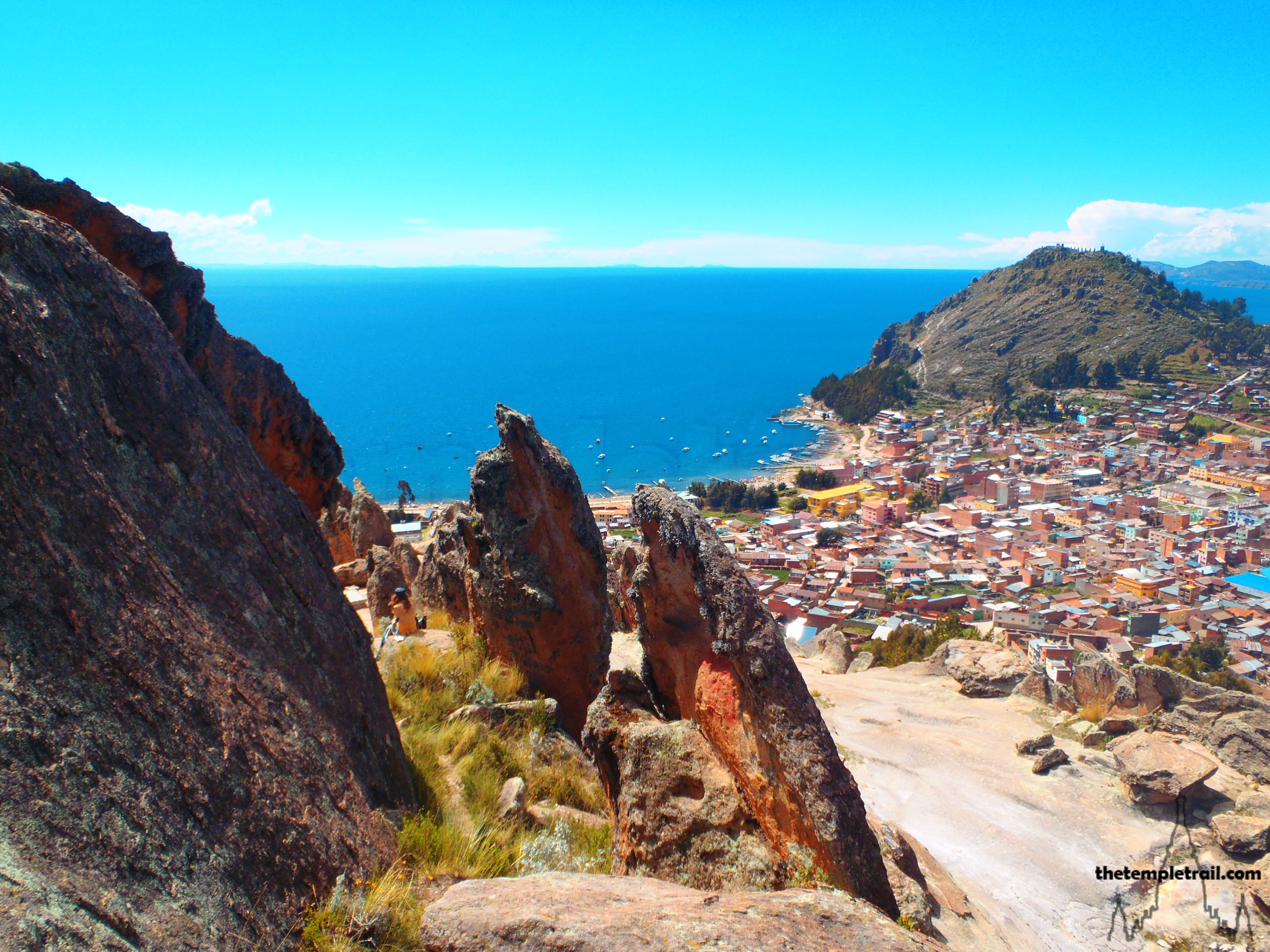Sitting in an immaculate wooden booth, you nurse your traditional Japanese breakfast of soba noodles in a smokey dashi broth. The restorative kake soba noodle soup and the accompanying sencha tea wake you from your early morning drowsiness and give you the vigour you need to begin your day’s traipsing in Kyoto. The restaurant, Honke Owariya, was opened in 1465 and the meal you have just eaten has been enjoyed by the imperial family ever since. You exit the noodle shop and slip into a thin, stall-lined arcade that houses Nishiki Market. The scents of tsukemono pickles and fish mingle with the smells of brewing tea and the bright colours of the vegetable stalls with their dried persimmons assault your senses.
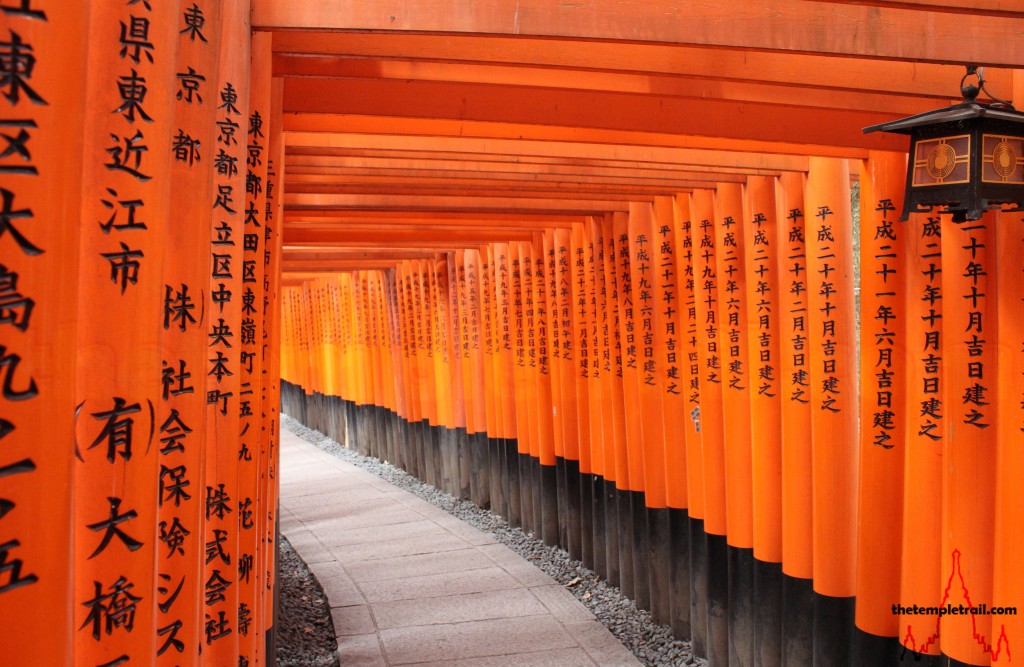
At the far end of your conveyor-belt stroll through the bazaar, a row of paper zigzag streamers (shide) hangs from a sacred rope (shimenawa) on a stone torii (ceremonial gateway). Beyond, a wooden frame holds row upon row of white paper lanterns emblazoned with Japanese characters. Walking into the diminutive sacred space, you stand before the main shrine hall of Nishiki Tenman-gū. The shrine is a beautiful example of an ancient, urban Kyoto Shinto shrine. The shrine honours Tenman-Tenjin, the god (kami) of scholarly learning. Tenjin is the kami form of Sugawara no Michizane, a 9th century scholar, poet and statesman. He is normally worshipped particularly by students who wish to score highly in their examinations. After a short time absorbing the atmosphere of the joss-smoke filled shrine among the concerned scholars, you go down the stairs and along the underground tunnel that takes you to the subway station and, ultimately, the train station.
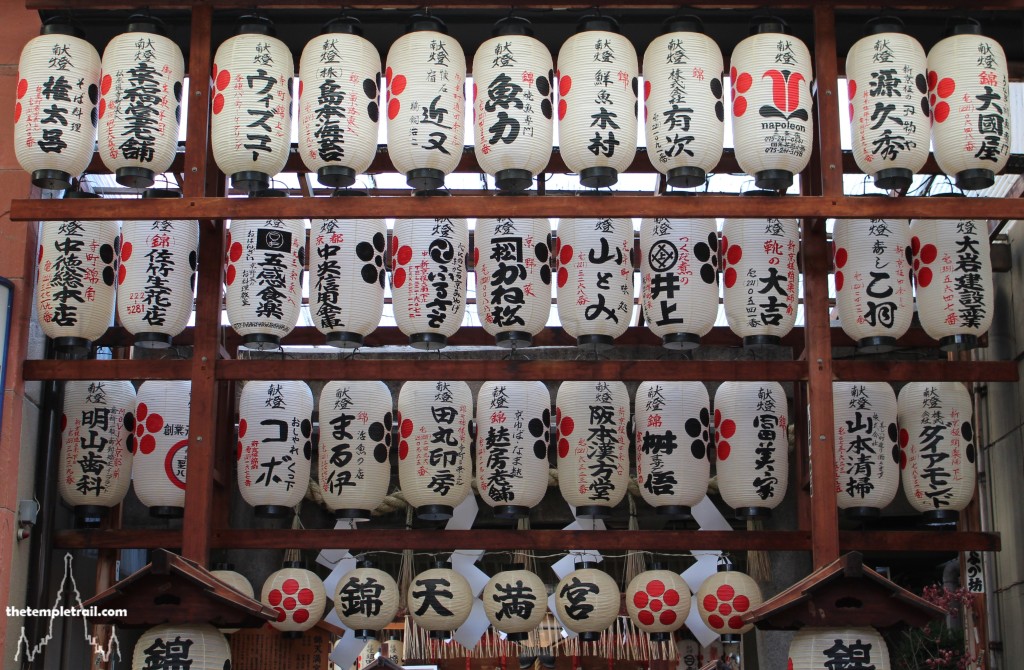
Kyoto station is relatively easy to navigate and you seamlessly pass through barriers and onto the southbound train. The leisurely locomotive ride takes you two stops to Inari station and alighting, you are almost immediately confronted by a huge red daiwa torii that gives you a taste of things to come. Crossing from profane to sacred, you enter Fushimi Inari Taisha, the principle shrine of the androgynous Inari Ōkami, one of the most powerful and important Kami in the Shinto pantheon. As you cross the spiritual brink into the shrine, you are constantly under the vigilant eye of kitsune (fox) statues.

The kitsune has an important role in Japan. Much fox lore was imported from China, where foxes have traditionally been seen as evil possessors, vicious tricksters and shape-shifters. While some of that element came across to Japan, the fox also has a role as a servant of Inari that wards against evil. The dual character of the kitsune can be found only in Japan and the white fox of Inari can be seen all over the temple. Outside of the first torii, the fox has a bunch of rice in its mouth and a kitsune ball of fire (kitsune-bi) on the end of its tail. This fox-fire has been seen as a trick used to make travellers lose their way by many cultures all over the world and is sometimes referred to as a will-o’-the wisp or ignis fatuus. Kitsune are often found to the northeast of enclosures in Japan, as they are said to be guardians of the demon gate (kimon). In folklore, demons and other monsters (yōkai), such as ogres (oni) are said to gather in the northeast and kitsune protect against these demonic forces. Kitsune are considered to be a variety of yōkai themselves.
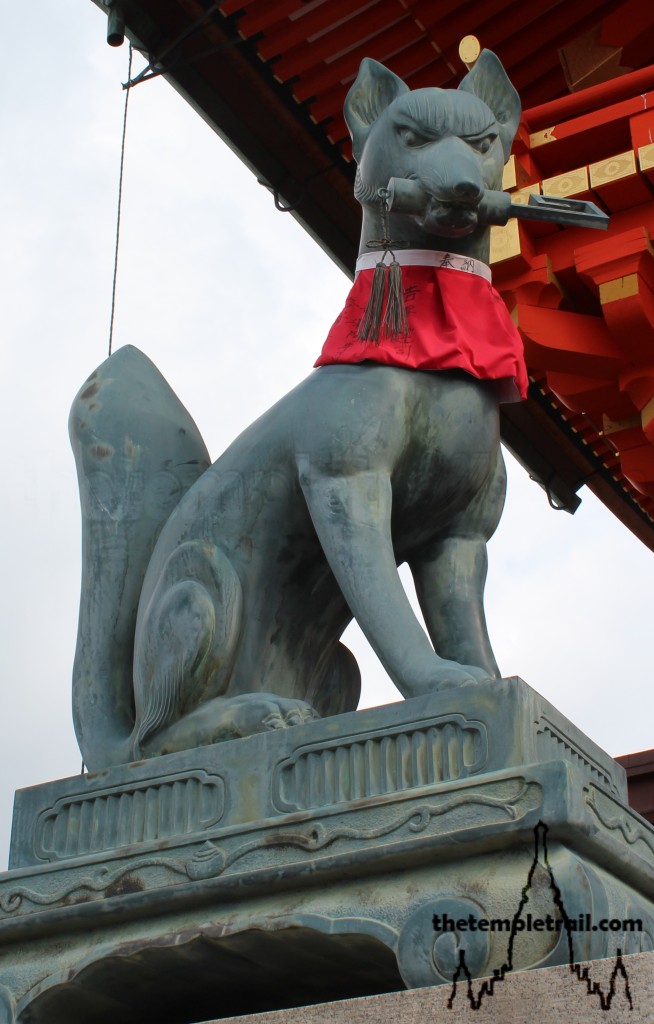
As you walk down the walkway (sandō) and past the water purification basin (temizuya), you near the gate tower (rōmon). The red and white structure is another checkpoint through which you must pass. It is guarded by yet more red-bibbed kitsune. The kitsune to the left holds a key in its mouth. This is the key to the granary; the home of Inari, kami of rice. Inari is a very important kami, as he/she oversees not only rice, but fertility, agriculture, sake, tea and industry. The sacred granary is the home to all of these and is representative of the house of Inari.
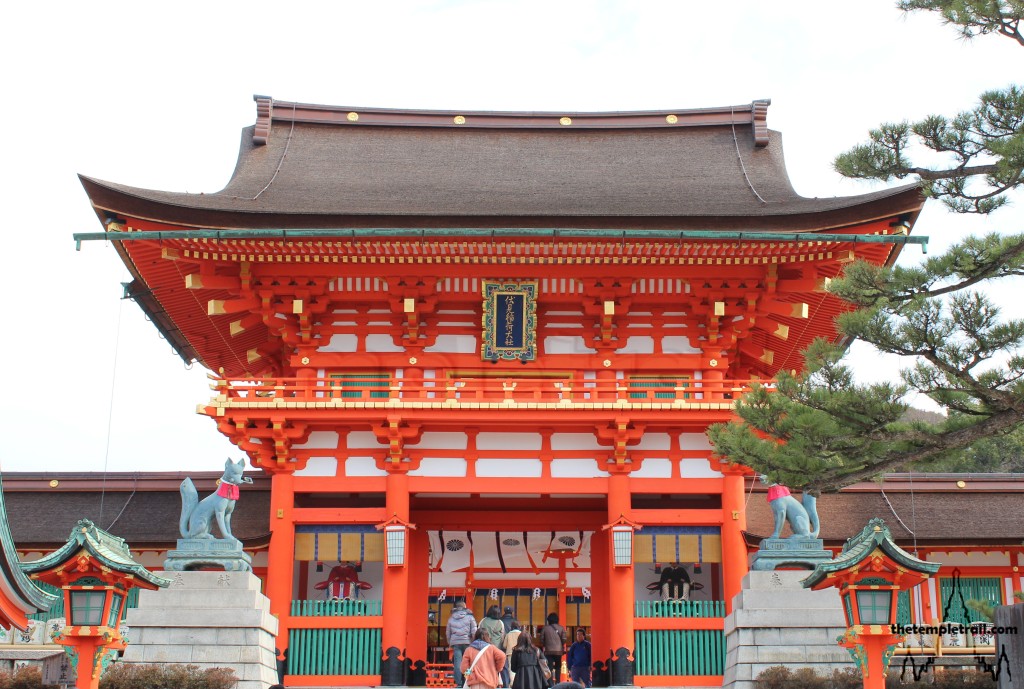
The rōmon, known as the Plum Blossom Gate (Sakura-mon), was donated to the shrine in the late 16th century by Toyotomi Hideoshi, a powerful lord (daimyo) and a great unifier of Japan. On either side of the entrance a second set of guardians protect the portal. Two keepers of the gate (monshu), in this case archers (zuijin), watch you enter. The Shinto archers in Heian period clothing are the most common form of guardian at jinja, but here they have a significance. They are, perhaps, a subtle nod to the legend that a young aristocrat called Hata-no-Irogu was using sticky rice cakes (mochi) for archery targets, when suddenly one of them changed into a white crane. The crane flew into a field and changed yet again into rice plants that yielded a huge crop. Hata-no-Irogu, dedicated a shrine to Inari on the spot and eventually, it became Fushimi Inari Taisha. The historical facts show that the shrine was founded in the early 8th century and relocated about a hundred years later. The famous Buddhist monk, and founder of the Shingon sect, Kūkai requested that the shrine be moved when he took over as the abbot of Tō-ji (East Temple). He made Inari the protector spirit of Tō-ji and the kami has been associated with the esoteric Shingon School ever since.
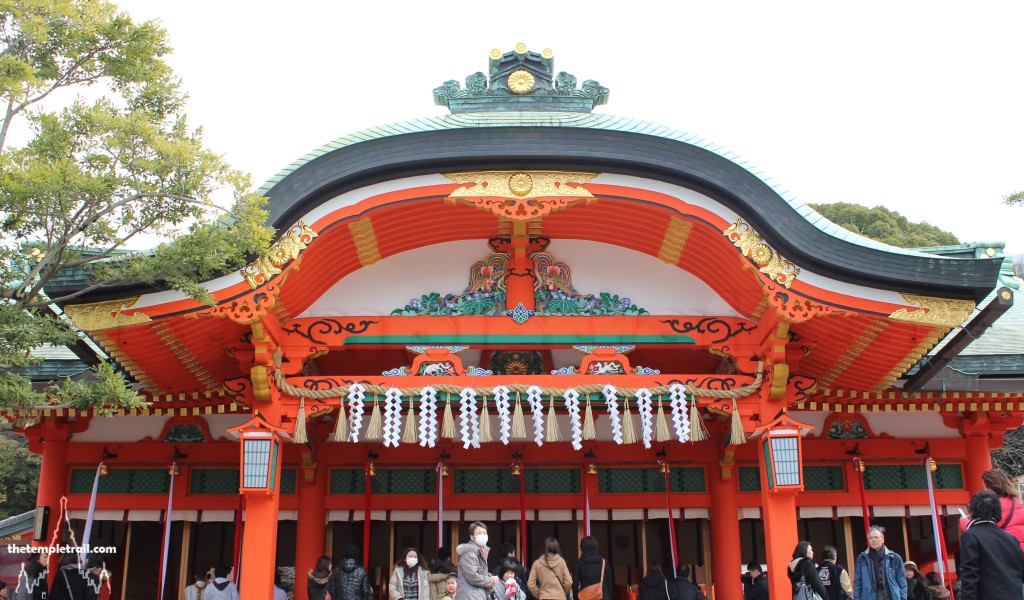
Past the watchful human and animal eyes, you process into the grounds proper of the of the grand shrine (taisha) if the Inari shrine network; a total of around 32,000 shrines. Arcing around the open walled outer oratory hall (gai-haiden), you climb a few steps to the inner oratory hall (nai-haiden). The vermillion building is adorned with a shide filled shimenawa on the eaves of the bow shaped roof. Gold highlights the red and a pair of phoenixes ornament the front of the building. Bells (suzu) hang along the front of the edifice with ribbons for worshippers to declare their presence to Inari. After asking Inari for what you need, you throw a few yen into the wooden collection box (saisen-bako) to thank the god for hearing your prayer.
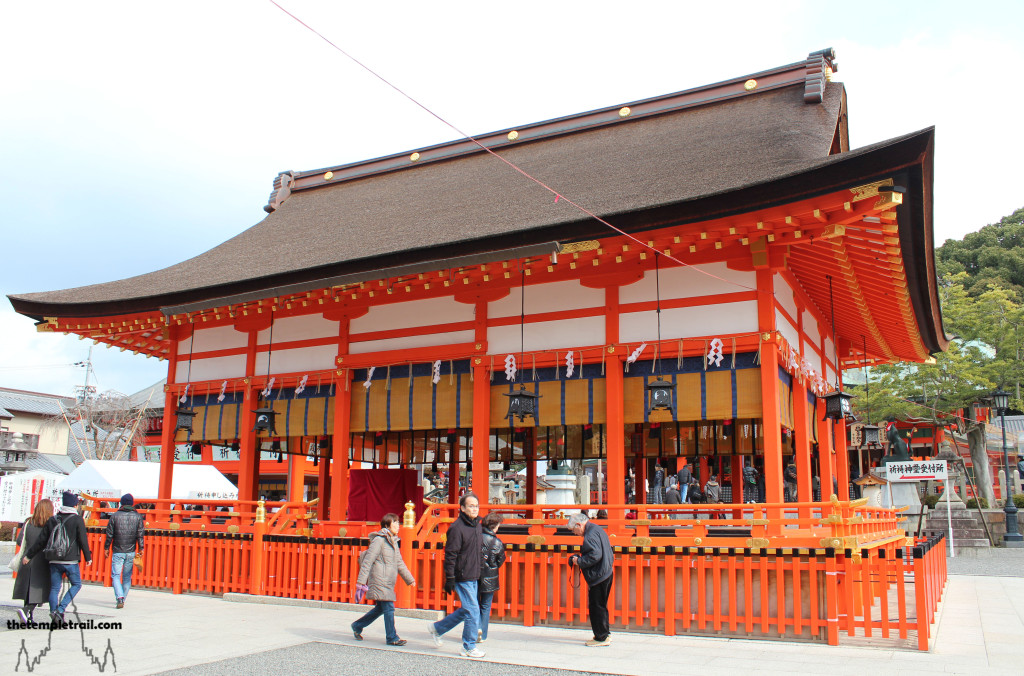
Behind the perfectly immaculate haiden is the most sacred building of the complex. The main hall (go-honden) houses the sacred body (go-shintai) of Inari. Built at the end of the 15th century, the building is of the nagare-zukuri style, the most common style of honden in Japan. The asymmetrical gabled roof flares outward at the front forming a portico that reaches the haiden. The entire complex burned to the ground during the Onin Civil War in the mid-15th century and everything you see was reconstructed after the smouldering ruins were reduced to ashes.
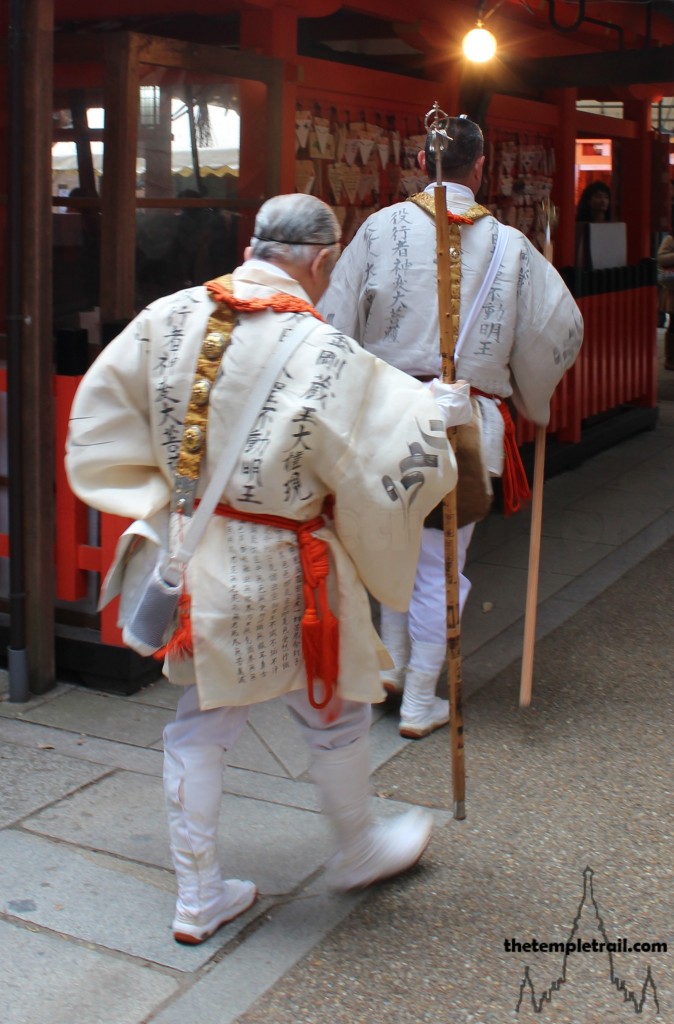
Circling the fence (tamagaki) of the honden, you come across two mountain hermits (yamabushi) wearing tiny black hats (tokin). They are dressed in coats (suzukake) that are festooned with written mantras in Japanese and Bonji script (a Japanized version of the ancient Indian Siddham script). Carrying their distinct staves (shakujō), they practice Shugendō; a Kami-Buddha mix of Tendai and Shingon Buddhism that also honours Shintoism and other Taoist and Animist beliefs. They live in the mountains and have supernatural powers. The lines between Buddhism and Shintoism are very blurred in Japan. It was commonplace when Buddhism first became established in Japan to have a Shinto shrine in the Buddhist temple. It is only since the Meiji restoration of the 19th century, when the law segregating Shinto and Buddhist temples (shinbutsu bunri) was enacted, that the two religions were forced into separate grounds. Passing the two figures, you feel the very real draw of the site. It is a living, breathing Shinto shrine, with thousands of devotees who sense the pull of Inari.
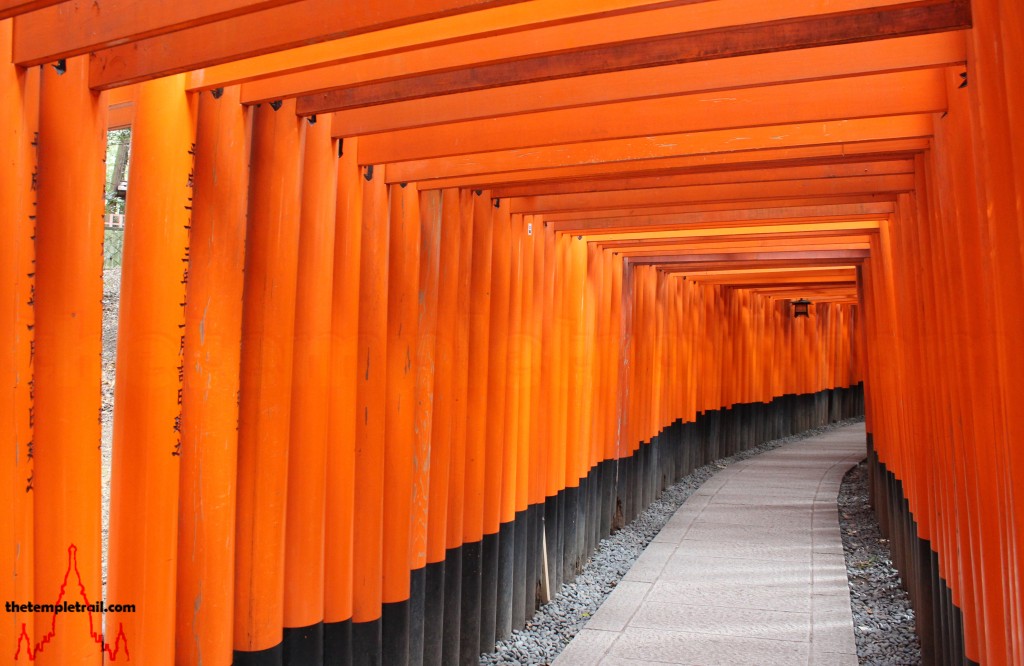
Sauntering by the gon-den (temporary house for the kami when the honden is being repaired) behind the honden and up a set of stairs, you come to a large torii that leads to another and yet another torii. This marks the beginning of the senbon torii (thousands of torii), a torii-lined path that is the iconic image of Fushimi Inari Taisha. The huge gateways are of a brilliant vermillion and black and are engraved with inscriptions from the donors. The thousands of torii (between 10 and 30 thousand) have been donated by various people seeking Inari’s blessing on their businesses. Merchants from all over Japan pay large sums of money to give a torii to the shrine. The large torii give way to a fork in the path and two sets of smaller torii. They are so close to each other, they form an almost perfect tunnel that completely conceals the outside world. Strolling up one of the torii tunnels, you feel lost in a magical red world. It is an almost unreal sensation that washes over you as you venture yet further into the mountains through this surreal passage.
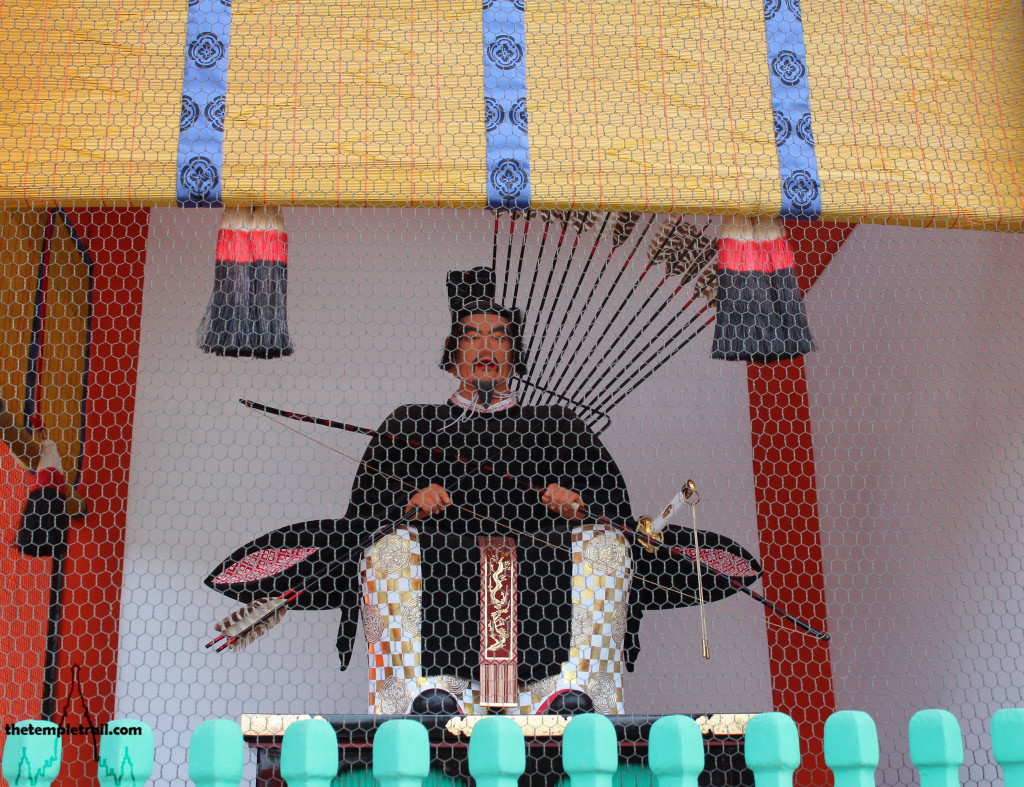
At the end of the set of tunnels is the inner sanctuary (okumiya) that occupies the heart of the mountain. Bursting forth from the passage, your eyes readapt to normal colour patterns. Surrounded by forest, this little oasis of human commotion in the middle of the mountain of Inari is a hive of activity. In the middle of the okumiya, the okusha hohaisho is the centre of most worship. The okusha hohaisho is a small shrine building where people bow to the three ridges of the mountain (Ichi-no-mine, Ni-no-mine and San-no-mine). Behind the okusha hohaisho is a small honden with another shintai (body of the kami). Like in the main honden, the shintai is open, rather than being wrapped in many outer layers, and can be viewed, as is common in Inari shrines. Both of the honden have a mirror as the shintai.
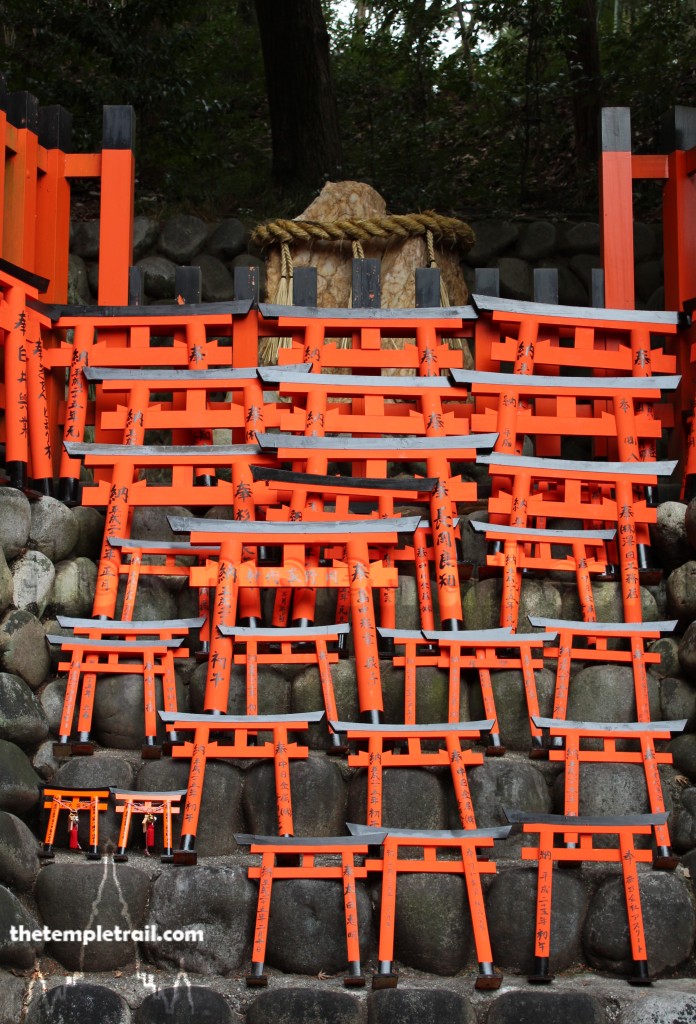
Behind the buildings, elevated above your level, is a sacred rock (iwakura) with a shimenawa wrapped around it. This is an important object to Shinto followers and is seen as a yorishiro (approach substitute); something that can attract and temporarily house the kami. In front of it people have made offerings of mini torii to Inari. Next to the altar, is a pedestal that holds another stone that you directly contact. The heavy stone (omokaru-ishi) is thematically present all over Asia in slightly different forms. Here, you lift the stone ball from its resting place and if it feels lighter than your ego, you will lead a lucky life. As you lift, another kitsune looks down on you. This one carries a ball in its mouth. The ball (tama) is symbolic of the soul (tamashi) as the words sound very similar. In lifting the stone ball under the gaze of the soul carrying kitsune, you are measuring the substance of your own being. In kitsune lore, the fox owns a small white ball that it guards very closely as it focuses its energy. If you can take the ball from the kitsune, it must promise to protect and help you.
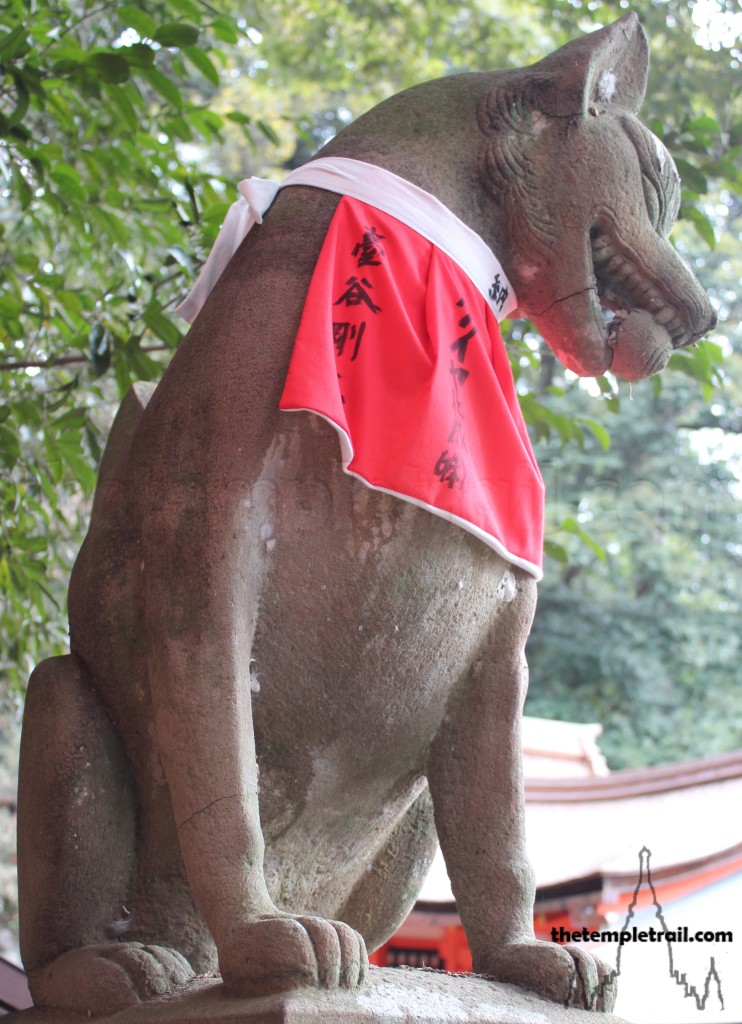
You leave the inner sanctuary and head up another trail of the senbon torii up through the mountain. Passing through a bamboo grove the site takes on a different feel. Nature, albeit managed, is king here and you are submerged in the tranquillity of the mountain. Hiking along the trail, you pass small stalls selling kitsune udon; a noodle dish that is topped with fried tofu (abura-age). It is said that the foxes love tofu, so this dish is favoured by them. Passing various shrines and mounds (tsuka), you come full-circle to the okumiya.
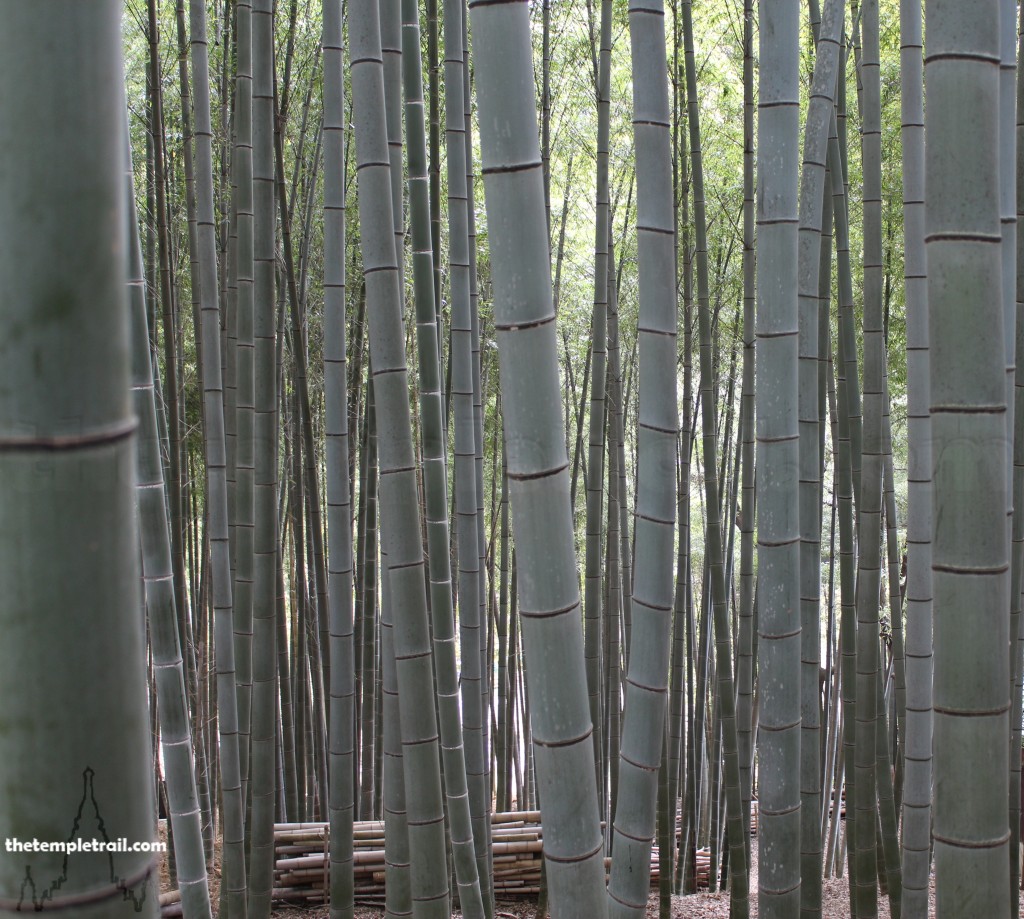
As you make your way down the mountain, you come across a strange stone lantern. The unusual item is composed of two kitsune holding a ring. The hollow is intended to hold a flame at certain times, but the folklore suggests that if you throw a stone through the middle of it, you will have some fortune. Being careful not to hit anybody or anything, you toss a small pebble through the void. Your journey into the world of the kitsune is complete. You have submitted your imagination to them and their powerful kami. At every turn you have been reminded of the duality of the fox. Walking away from the shrine, you realize that you too have different sides to your soul. You see that there is no outright good and evil, but that we all have a little of each in us. The ratios may vary, but we are all capable of doing right or wrong and the shrine serves to remind you that, ultimately, it is you who chooses your actions and, thereby, your destiny.
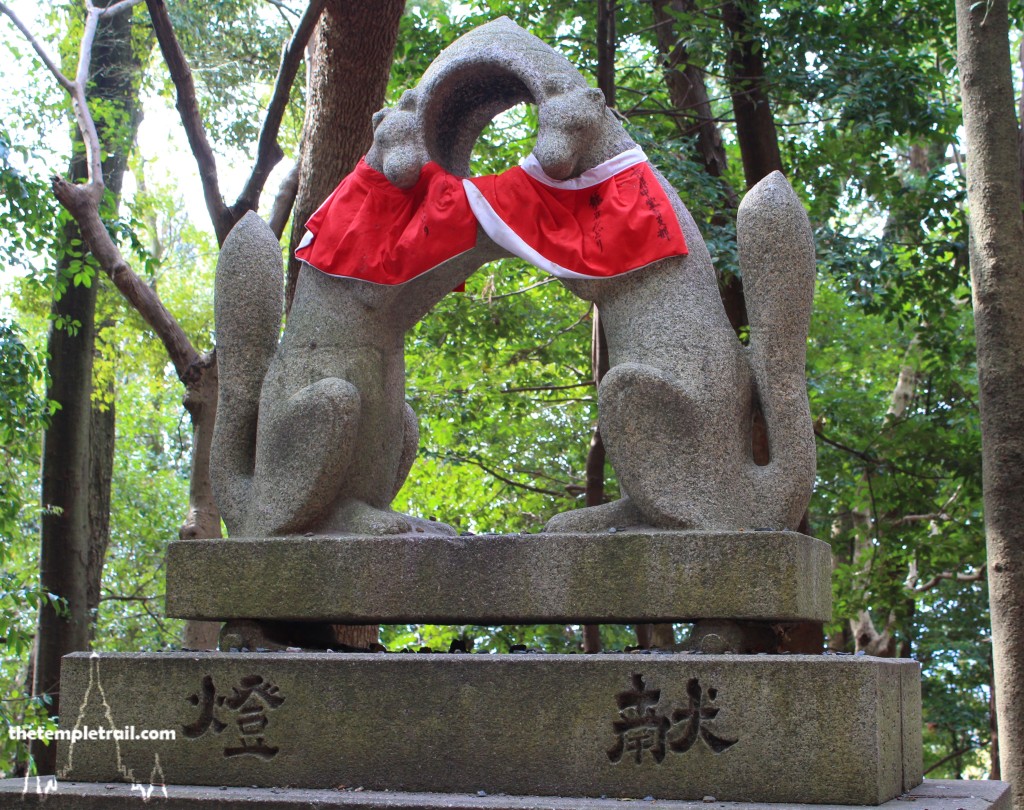
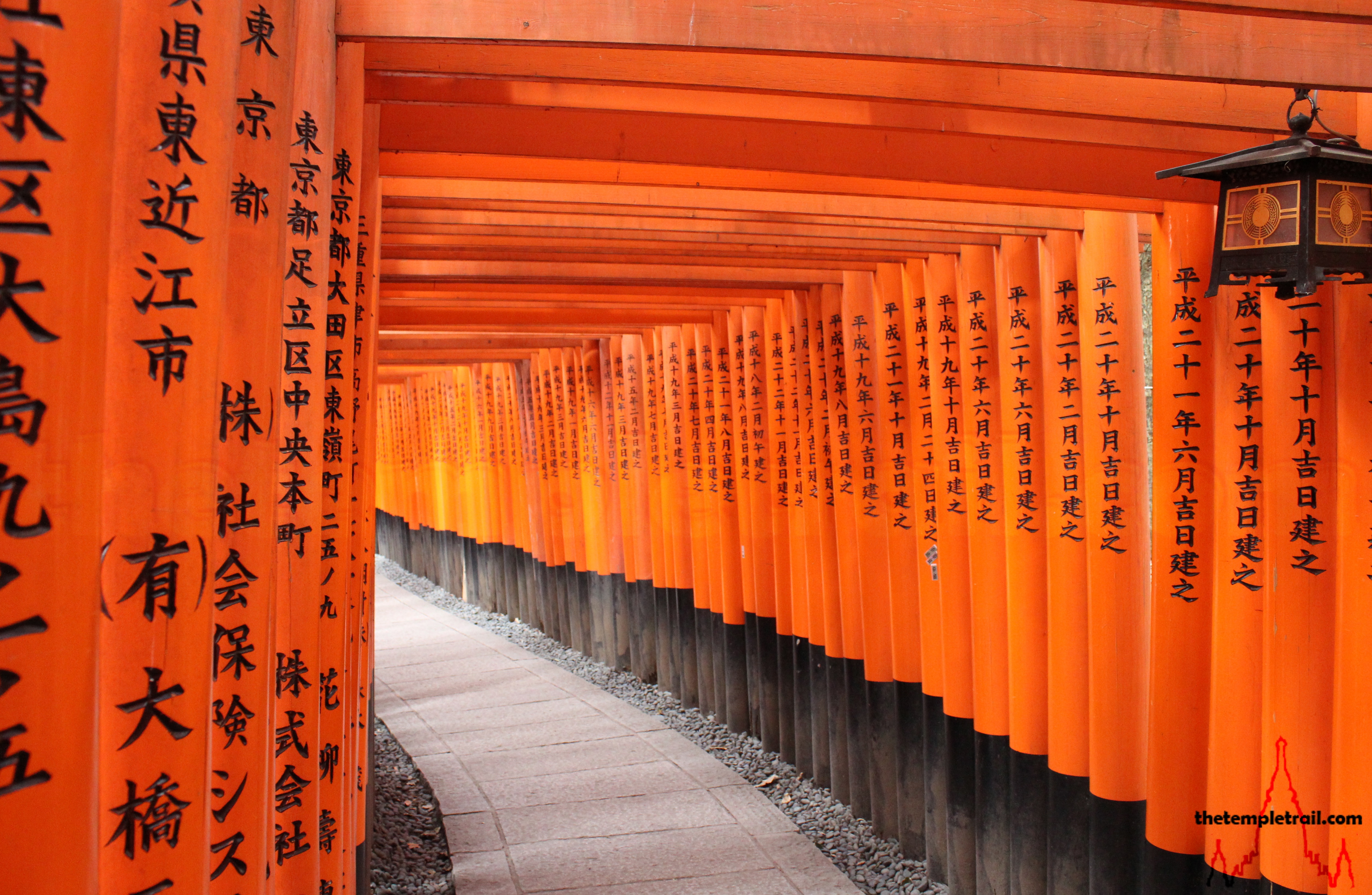
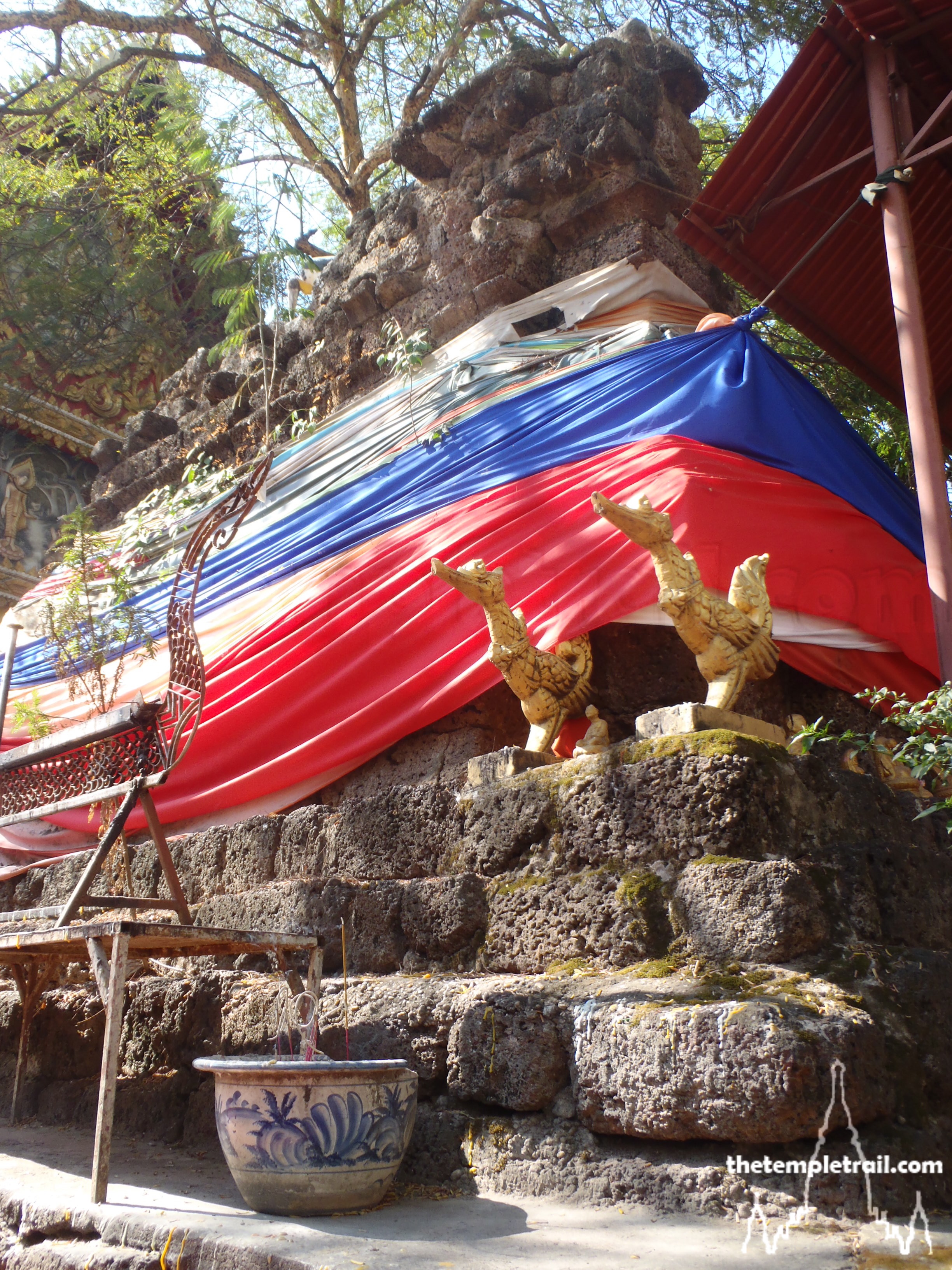 Wat Si Muang
Wat Si Muang